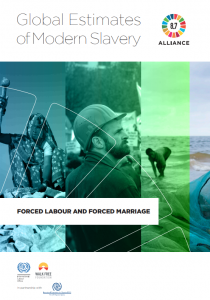 For children and youth on the move via the Mediterranean Sea routes to Europe, the journey is marked by high levels of abuse,trafficking and exploitation. Some are more vulnerable than others:
For children and youth on the move via the Mediterranean Sea routes to Europe, the journey is marked by high levels of abuse,trafficking and exploitation. Some are more vulnerable than others:
those travelling alone, those with low levels of education and those
undertaking longer journeys.
Most vulnerable of all are those who come from sub-Saharan Africa.
The 2017 publication opens up work undertaken by UNICEF and International
Organization for Migration (IOM) analysis of recounted journeys of some
11,000 migrant and refugee children (adolescents aged 14–17) and
youth (18–24), as recorded in their responses to the Displacement
Tracking Matrix Flow Monitoring Surveys conducted by IOM along
the Central and Eastern Mediterranean routes to Europe in 2016
and 2017.
Sections on Routes, why migrant children are particularly vulnerable, rising xenophobia in countries of reception and how to put in place enhanced protection. This work informed the Executive Summary recommendations of the recent CCARHT report on 7 European countries and the vulnerability of unaccompanied Children to Child Trafficking – and why keeping good quality data matters to enhance the essential child protection which needs to be put in place.
Read the UNICEF report here

The essential read Bi-annual report submitted by the UN Office on Drugs and Crime – which holds the mandate for reporting on States’ performance in effecting the Palermo Protocol 2000 in their National legislation and operations against Organised Crime in this arena.
2018 Report concentrates on the request for improved data capture, with segmentation for gender, ethnicity, age, sexuality and abilities.
Without good data, policy makers, enforcement agencies, businesses, and civil society at large is blind sided in relation as to what needs to happen, and how effective or not different interventions are proving.
There is a separate report to this must read report, for any who want to follow the prosecution and National Referral rates of trafficking globally, looking at Child Soldiers.
UNODC 2016 report had a particular thematic interest in the exploitation of Children. The report is a useful source for helpful infographics, but due to the nature of the reporting instrument may not give the full picture of the extent of child trafficking globally at present.
Download or read here.
Following the landmark protocol from the ILO in 2014 which has now come into force the ILO is estimating the levels of forced labour and forced marriage across the globe – with country and regional breakdowns. A vlog to promote and report below.



